Strangers On A Train (1951)
Directed by: Alfred Hitchcock
Written by: Ben Hecht, Czenzi Ormonde, Patricia Highsmith, Raymond Chandler, Whitfield Cook
Starring: Farley Granger, Leo G. Carroll, Robert Walker, Ruth Roman
HCF REWIND NO. 224: STRANGERS ON A TRAIN [US 1951]
RUNNING TIME: 102 min
AVAILABLE ON DVD
THE HITCHCOCK CAMEO: Struggling to board a train with a very large and awkward double bass fiddle (similar in shape to Hitchcock’s own rotund body), as Guy Haines gets off in his hometown of Metcalf
REVIEWED BY: Dr Lenera, Official HCF Critic
On a train, amateur tennis start Guy Haines accidentally meets Bruno Anthony, who recognizes Guy. Bruno tells Guy about his idea for the perfect murders: Bruno will kill Miriam, Guy’s vulgar and promiscuous wife who won’t grant him a divorce so he can marry a senator’s daughter, and in exchange Guy will kill Bruno’s father. Having no identifiable motive for the crimes, they would not be suspects. Guy hurriedly leaves, but Bruno feels he has agreed. He pockets Guy’s monogrammed cigarette lighter and lets out to kill Miriam….
As will probably be the case with four or five Hitchcock films to come, I didn’t really need to watch Strangers On a Train in order to do the review for it, as it’s one I’ve watched so many times and always get the same amount of pleasure from it. This is the Master Of Suspense back on top form with a superb suspense thriller which is as thoroughly entertaining and exciting as it would have been back on 1951. It takes a contrived premise, and turns it into a near-master class in now to tell a story in cinematic terms, constantly using things like visual symbolism and camera tricks, yet having them always seem appropriate and never having them take over the story. The film is one memorable shot or scene after another, the director constantly finding interesting ways to realise something. The tale itself is one of those “what if”? ones where you really stop and think, a perfect example for Hitchcock to do one of the things that makes most of his movies resonant today: probe and exploit the dark side of human nature, as well as wind up and manipulate an audience, yet it’s also quite a funny film, the whole thing in some respects as much a black comedy as anything else. It’s also a really tight affair with no wasted scene and dialogue sharp and to the point, in contrast to the far slower rhythm that Hitchcock was generally adopting for his films.
Hitchcock secured the rights to the Patricia Highsmith’s first novel for just $7,500, and wrote a treatment with Whitfield Cook. Much was altered, notably Bruno changing from an ugly alcoholic to a dandy-like mama’s boy, Guy changing from an architect to a tennis player and the integration of tennis into the plot, Guy not going through with murdering Bruno’s father, and Guy killing Bruno. Hitchcock collaborated with Raymond Chandler on the script, but they didn’t get on and most of Chandler’s very downbeat script, which ended with Guy in a mental asylum, wasn’t used by the final authors Czenzi Ormonde [assistant to Ben Hecht who was unavailable], associate producer Barbara Keon and Alma Reville, Hitchcock’s wife. They were responsible for the carousel climax [itself borrowed from the novel The Moving Toyshop by Edmund Crispin, right down to the man crawling under it] and the important device of the lighter. Hitchcock originally wanted William Holden to play the part of Guy Haines: nonetheless, despite this and other casting disappointments, he threw himself into the production, personally designing things like Bruno’s tie. Supposedly Hitchcock offered his daughter Patricia, who was scared of heights, a hundred dollars to ride the Ferris wheel on the big fairground set, only to order the power cut, leaving her in the dark at the very top of the ride for an hour, though this has been disputed. Laura Elliot [Miriam] had to wear glasses so dark she was virtually blind. Cinematographer Robert Burks would go on to be Hitchcock’s cinematographer of choice for the next thirteen years. Warners wanted some minor alterations before release – the removal of a bit of dialogue hinting at Bruno’s homosexual interest in Guy, the addition of a couple of shots, and the addition of a comic final scene where Guy has no more interest in strangers on a train – though the original version can be widely seen now. The strong commercial and critical response proved that Hitchcock was back in full force.
Strangers On A Train opens with intercut shots of the feet of the two main characters, until one of Guy’s accidently knocks Bruno’s, rather than the other way round. Why Warners were concerned about a bit of Guy’s dialogue is beyond me, because the character’s gay leaning seem obvious. In fact, Hitchcock and actor Robert Walker worked out a series of subtle gestures to that effect, while of course Farley Granger, who played Guy, was gay so there is an unmistakable element of sexual tension which can’t be ignored. In any case, Bruno appears to be quite mad almost immediately in the early scenes between him and Guy on the train, which are probably the only slowish scenes in the picture, but are necessary anyway to set everything up. We then meet Guy’s trampy wife Miriam, and it’s unusual to have a woman in a film of that time about to have a baby outside of her own marriage and the film be so obvious about it….though of course she doesn’t last long, and the audience is made to hate her. It’s even suggested that Guy could kill her as he’s so angry with her, and we would like him to! Of course the difference between Guy and Bruno as that Guy is like most of us, who may sometimes wish to kill someone but never go through with it, and Bruno isn’t, but isn’t Bruno such a cool psychopath as he emerges from the train to hunt down Miriam, all dapper and friendly [well, until he bursts a young boy’s balloon with his cigarette], and aren’t we just willing him to kill that slut and free up Guy [who isn’t so perfect himself: he’s clearly carrying on with another woman while he’s married and may not be a whole lot better than Miriam in this respect]?
We now come to the murder sequence, and it is an absolute master-class in how to build and stretch out tension. Bruno follows Miriam and her two [yes two] beaus around a fairground, and, in a particularly effective touch, Miriam notices and rather likes the handsome stranger constantly behind her, the film’s most disturbing illustration of one of its themes: the attractiveness of evil and humankind’s dark side. This also gives a queasily sexual aspect to the whole sequence. Bruno follows the trio all over the place, and we even get a false scare when they all enter ‘The Tunnel Of Love’ and we see the shadow of Bruno seemingly about to strangle Miriam’s, but the real climax occurs after where, on a bank beside the lake, Bruno finds Miriam alone, offers her a light, and chokes her to death, the camera observing it as a huge reflection in one of the lenses of her pair of glasses as they fall to the ground. Even now, and to this fan of filmmakers like Dario Argento, this still remains one of the greatest of movie murder scenes, both ugly and beautiful, both horrifying and subtle, both surreal and realistic, a stunning example of cinema technique [they actually built an enormous lens and reflected the performers in it at ninety degrees], yet totally aesthetically justified. There is so much that Hitchcock pioneered, and did before anyone else, and often did it better.
Strangers On A Train has worked itself up so much now that is has to take a breather, though the next few scenes suffer more from the stilted, distant performance of Ruth Roman as Anne Morton. Her love scenes with Granger remain highly unconvincing. Never mind, Bruno starts to show up everywhere, be it as a dark blot on the landscape of the exterior of the White House, as the one member of the audience not turning his head during a tennis match, or as an uninvited guest at a soiree given by Senator Morton, where he initially charms two elderly ladies in a conversation about murder until he nearly strangles one of them to death because another guest, Anne’s sister Barbara, reminds him of Miriam. The guest was actually played by Hitchcock’s daughter Patricia, who had a small role in Stage Fright, and her character is great in this film with her somewhat inappropriate sense of humour. Due to our knowledge of how censors were at the time, we know that Guy won’t kill Bruno’s father despite being almost forced by Guy to do so, but after this point the film really does get more and more thrilling. Guy has to quickly win a tennis match [who knew tennis could be so exciting?] so he can stop Bruno planting a piece of evidence to incriminate him, but this is intercut brilliantly with Bruno dropping the cigarette lighter into a drain and trying to retrieve it…and by God we actually want him to get it back, so tightly has Hitchcock wrapped us round his little finger. It all ends on an out-of-control carousel, and if the idea of a cop accidently shooting the operator so it goes out of control seems unbelievable, it actually happened in real life!
What a stunning sequence this is, a sequence which would have ensured Hitchcock’s greatness even if he hadn’t made any other films. The carousel goes faster and faster, the shrieks of joy of the children turn to shrieks of fear, Guy and Bruno battle it out, Guy even turns into an action hero to save a child….and it’s all technically very convincing while you can also see everything that’s going on. These days, such a scene probably would be done with shakycam and one second cuts, and I would probably cut it some slack because….hey….it’s an out-of-control carousel, but watching the scene again really shows how poor some filmmaking is now today, though of course what gives it an extra edge is seeing a guy crawling under the carousel for real to try to get to the lever to stop it. For the climax, they took a toy carousel and photographed it being blown up by a small charge of explosives. This piece of film was then enlarged and projected onto a vast screen, positioning actors around and in front of it so that the effect is one of a mob of bystanders into which plaster horses and passengers are hurled in deadly chaos. It’s a breathtaking moment which would ‘t be done any better today, but then Strangers On A Train is crammed full of technical brilliance – the tennis is edited together in such a manner that you almost believe that Farley Granger is playing on the court – and there’s even far less back projection than normal.
Hitchcock constantly reinforces his film’s motifs at virtually every moment, most notably the idea of doubles – there seem to be two sets of everything in this movie. Meanwhile Bruno could be the dark side of Guy’s character, yet he’s also on some levels a likeable guy and even quite funny, more fun to watch, actually, then the supposedly upstanding yet slightly hypocritical Guy. I don’t think enough attention has been paid to the humorous elements of Strangers On A Train, in particular the scenes, of which I wished there were more, between Bruno and his mother,an oddly benign mother for a Hitchcock film, though one who is possibly as nutty as her son. Marion Lorne never fails to make me laugh with her ticks and the way she delivers her lines. Walker, who died six months after from an allergic reaction to a drug, is simple brilliant throughout. It’s a good example of a performance which deserved to be nominated for, and probably win, an Oscar, but wasn’t due to the nature of the film [Hitchcock’s films were mostly considered pieces of entertainment with little artistic worth of depth for quite some time, it was the French who first saw the light]. Walker is creepy, attractive, amusing and disturbingly admirable all at the same time, and one of the screen’s greatest pyshopaths who for me ranks with the owner of the Bates Motel in a certain later Hitchcock film. Granger has often been described as a little weak, but his slight awkwardness as an actor really works for the dimension of the film.
Burks’ often expressionistic photography, with film noir-style use of shadows, especially concerning people, and slanted angles, is fantastic throughout- this is one film which just wouldn’t work as well in black and white. The score by Dmitri Tiomkin, far more impressive than his work on Shadow Of A Doubt, nicely contrasts a hesitant, controlled theme for Guy, and, by extension, Anne, with a more sinister, vigorous one for Bruno, throughout, and has some splendidly dark passages. He also makes great use of the song The Band Played On for the fairground sequences, even having some of the characters sing it at one point where the film almost turns into a musical. I’m not quite sure if Strangers On A Train is Hitchcock’s best film up to this point – there are flaws in casting, plot and that bizarre scene where Guy sneaks up some stairs and the dog supposedly guarding Bruno’s father doesn’t even make a whimper – while there are definately films after it that are even better, but it’s certainly one of those films which has so much in it to talk about and is always a joy to watch. There’s a great sense of invigoration about the whole thing, a great director recharging his batteries and showing everyone what he can do. Tremendous fun, but with so much to admire. It was remade in 1969 as Once You Kiss A Stranger changing Bruno to a woman, and in 1996 as Once You Meet A Stranger where both the main characters are women, while 1996’s Throw Momma From The Train was a more humorous variation on the tale.
Rating: 










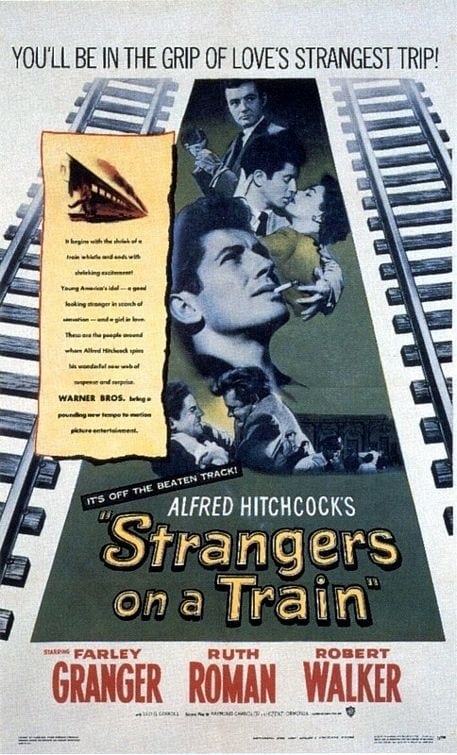
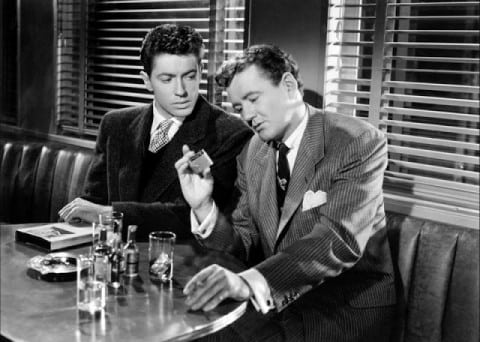
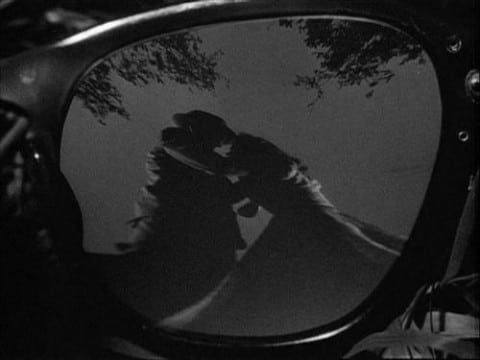
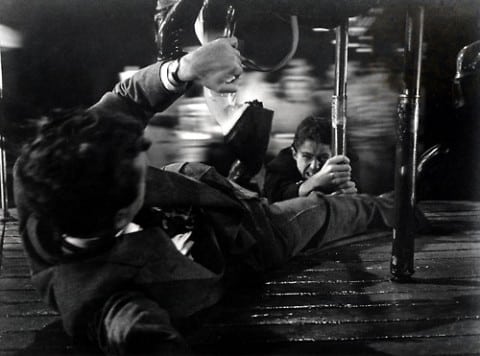

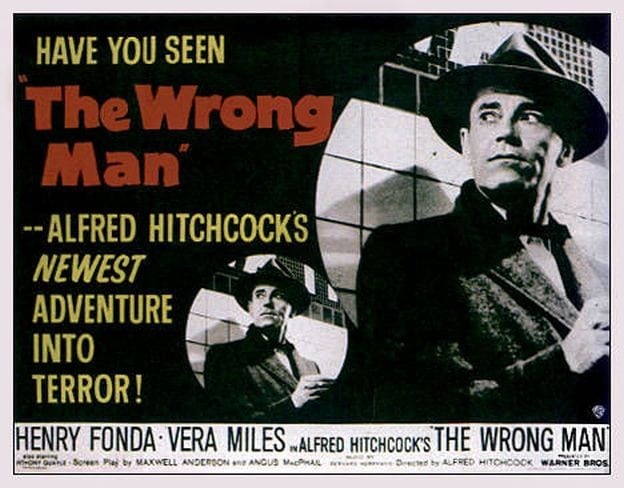
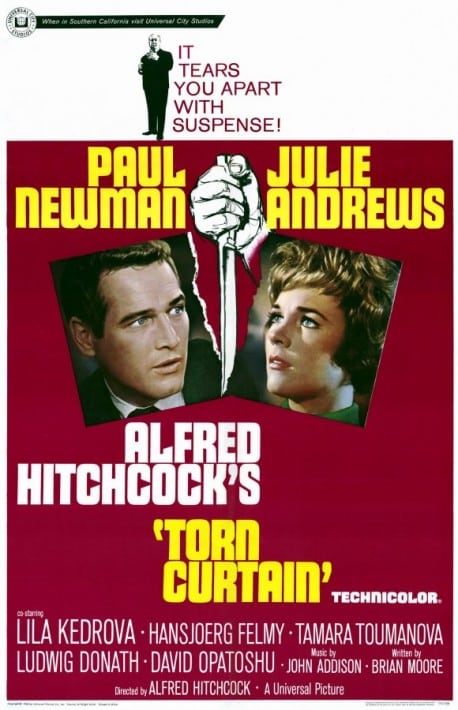
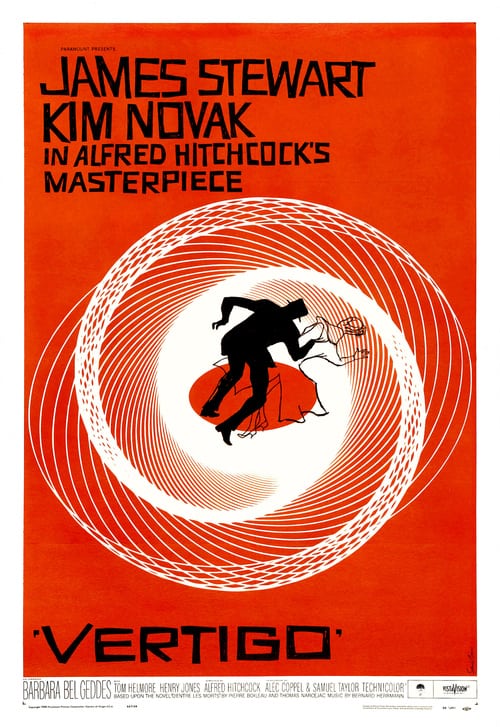
Be the first to comment